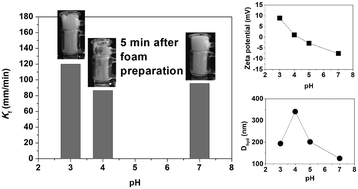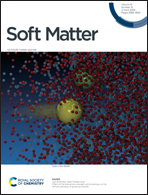Influence of pH on the surface and foaming properties of aqueous silk fibroin solutions†
Abstract
Silk fibroin (SF) adsorbs at the air/water interface, reduces the surface tension, and forms interfacial layers suppressing bubble coalescence and stabilizing foam. Variation of pH alters the inter-molecular interactions of SF in the interfacial layers and thus interfacial network formation, dilatational visco-elasticity and foaming properties. At pH 4, around the isoelectric point, the reduced electrostatic repulsion between the SF molecules results in thicker adsorbed layers, but adsorption rate, foaming rate and foam stability are lower than at pH 3 and pH 7. At the highest pH investigated (pH 7), the small aggregate size and high protein flexibility lead to the formation of more ordered and stable viscoelastic interfacial networks, which are resistant to deformation breakage and generate homogeneous, denser and more stable foams.



 Please wait while we load your content...
Please wait while we load your content...